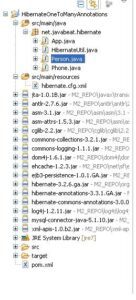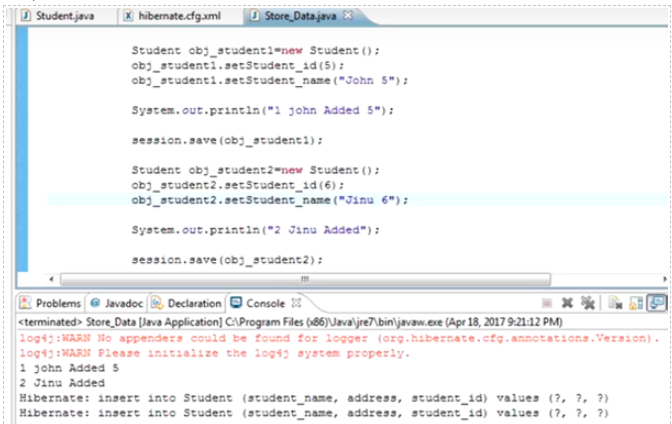

- #Hibernate annotations from which version update
- #Hibernate annotations from which version code
Create File and Folder Tables create table file (įolder_id integer not null auto_increment,Ĭ.
Add mappings for File and Folder entities in file as belowī. Lets take an example of File and Folder relationship (One Folder can have many Files ) for One to many associations. Running the program will end up in below state of Book Table Transaction tx = session.beginTransaction() Į. Import Ĭonfiguration cfg = new AnnotationConfiguration().configure() Test Program- One thing to note here is we need to use AnnotationConfiguration class import Create Book Table script create table Book (ĭ. Import class Book int String String author Ĭ. 
21.5 Examples 21.5.1 Basic Entity Persistenceī. Load entity class using addAnnotatedClass() method of AnnotationConfiguration like belowįactory = new AnnotationConfiguration().In traditional xml approach we use tag to specify the mapping files but in case of annotation,we can use one of the approaches Applying annotation on field enables field accessor and applying it on getter makes it a property accessor. this annotation is used to manage one to one relationship with annotation to specify foreign key- primary key relationshipĭepending on the location where the annotation is added, it decides the accessor strategy.– this annotation is used to manage many to many relationship with annotation to specify the join table.
 this annotation is used to manage one to many relationship with to specify the join column in entities. Use mappedBy attribute for bidirectional associations.įor a unidirectional association with join column approach, we need to use annotation in conjunction with annotation – this annotation is applied on a collection property to manage one to many relationship.
this annotation is used to manage one to many relationship with to specify the join column in entities. Use mappedBy attribute for bidirectional associations.įor a unidirectional association with join column approach, we need to use annotation in conjunction with annotation – this annotation is applied on a collection property to manage one to many relationship. 
Hibernate assumes those fields to be annotated as is the detail of Associations Annotations If we do not mark field with then also property will be considered as persistent and it will be mapped with the column of same name as property name. By default all non-static properties are considered as persistent so to ignore any particular property from persistent, add annotation.– this annotation is applied on column and specifies that this column will be used for versioning.
#Hibernate annotations from which version update
updatable - is equivalent to update=false/true which decide to use this column in update or not when the value is null. insertable- is equivalent to insert=false/true which decide to use this column in insert or not when the value is null. length- to specify the length of column. annotation exposes following commonly used attributes. this annotation is applied on a property and is used to map the property with table column. However to override the ID generation strategy we can use annotation with This annotation accepts two attributes strategy and generator. – Hibernate automatically uses the id generation strategy when we add annotation. It is equivalent to use of tag in hbm files. This informs hibernate that corresponding property will be used as an entity identifier. – This annotation is applied on a column and it has a special meaning. We need to use name attribute of annotation to supply the table name. this annotation is also used at a class level and is used to provide the table name to which the entity will be mapped. this annotation is used at a class level to define that this class is an entity so the class must follow all the entity rules. #Hibernate annotations from which version code
My recommendation is to use JAP annotations as much as possible so that application code remains portable. Hibernate also provides annotations with the same name under package but those are the extension over JPA. There can be scenarios where you might need hbm files even if you are using annotations.Īnnotations are JPA2 specification compliant and will be available under javax.persistence.* package. One of the biggest advantages of using annotations over hbm files is that we can get rid of hbm files. We can configure the metadata in entity class itself using annotation instead of configuring in hbm files.








 0 kommentar(er)
0 kommentar(er)
